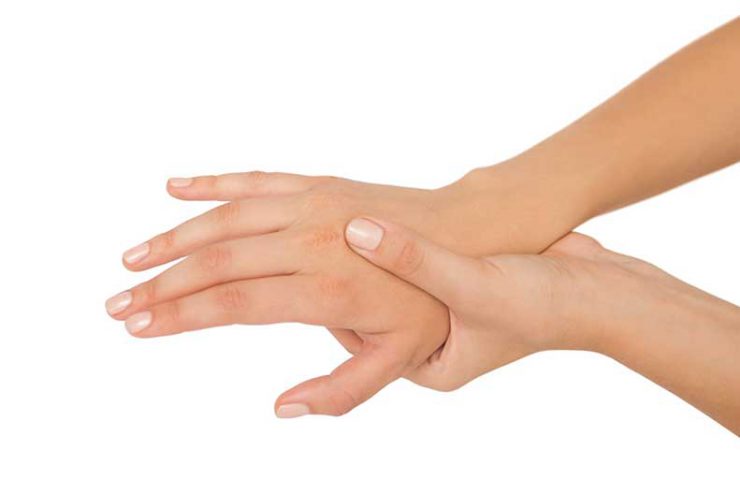Do you sometimes notice an odd white, blue, or red coloration in your fingers or toes? It might be a sign of Raynaud’s phenomenon.
What Is Raynaud’s Phenomenon?
What causes Raynaud’s is unknown, but the process is well understood. A vascular activity called vasospasm causes the blood vessels in the fingers and less commonly the toes, ears, lips, and nose to overreact when exposed to cold and stress. You might also experience cold or tingling sensations in the same areas.
Never Miss a Beat!
Subscribe to Our HealthBeat Newsletter!
Thank you for subscribing!
You can now select the specific newsletters you'd like to receive.
You are already subscribed.
Subscribe to more newsletters in our email preference center.
Sorry, an error occurred. Please try again later.
Get Healthy Tips Sent to Your Phone!
Raynaud’s Phenomenon Symptoms and Diagnosis
Coloration of the fingers and toes is one sign of Raynaud’s. To determine whether you have primary or secondary Raynaud’s, your health care provider may conduct a nail fold capillaroscopy test.
Using a microscope, he or she looks for deformed capillaries in the fingernails or toenails. Their presence may indicate primary Raynaud’s and the doctor may order blood tests to be sure.
Secondary Raynaud’s is diagnosed if some other health condition—artery or connective tissue diseases, for example—causes the phenomenon. The primary form has no other source.
Raynaud’s Phenomenon Risk Factors
Predominantly occurring in women, primary Raynaud’s phenomenon occurs between ages 15 to 30. The secondary form of Raynaud’s usually begins after age 40.
A third of people with the disease have a close relative with Raynaud’s. Lupus and other medical conditions increase the risk for developing it. Workers who routinely traumatize their hands operating machinery or are exposed to such chemicals as vinyl chloride are also at risk.
Living with Raynaud’s Phenomenon
Cold temperatures, smoking, and stress aggravate Raynaud’s phenomenon. You can help reduce the number of attacks and improve your overall health by following these tips from the American College of Rheumatology (ACR).
- Quit smoking and stay away from secondhand smoke
- Avoid caffeine because it constricts your blood vessels
- When going outdoors in cold weather, be sure to dress warmly
- Stress can cause Raynaud’s attacks, so try to minimize it
- Don’t use tools that vibrate your hands
- Talk to your health care provider about any medications you take that constricts blood vessels
The ACR also advises those with Raynaud’s to pay special attention to their hands and feet. That means having proper-fitting shoes, avoiding injury, and not wearing anything that constricts the blood vessels. Avoid going barefoot, always wear gloves (mittens are best) in the cold, and practice good nail care.
Raynaud’s Phenomenon Treatment
To relieve an acute attack of Raynaud’s phenomenon, the ACR advises “the first and foremost action” is to gently warm affected areas. During an acute outbreak:
- Wiggle your fingers and toes
- Make windmill movements with your arms
- Warm your hands under your armpits
- Immerse your hands and toes in warm water
- Massage the affected areas
Some medications used for treatment prevent tissue damage and reduce the number and severity of attacks. Medications also treat underlying health conditions that cause secondary Raynaud’s. Nerve-blocking injections, surgery, and even amputation may provide the only relief for those coping with the most severe forms of the disease.
If you suspect Raynaud’s phenomenon, contact UPMC Heart and Vascular Institute to find help.
About Heart and Vascular Institute
The UPMC Heart and Vascular Institute has long been a leader in cardiovascular care, with a rich history in clinical research and innovation. As one of the first heart transplant centers in the country and as the developer of one of the first heart-assist devices, UPMC has contributed to advancing the field of cardiovascular medicine. We strive to provide the most advanced, cutting-edge care for our patients, treating both common and complex conditions. We also offer services that seek to improve the health of our communities, including heart screenings, free clinics, and heart health education. Find an expert near you.
